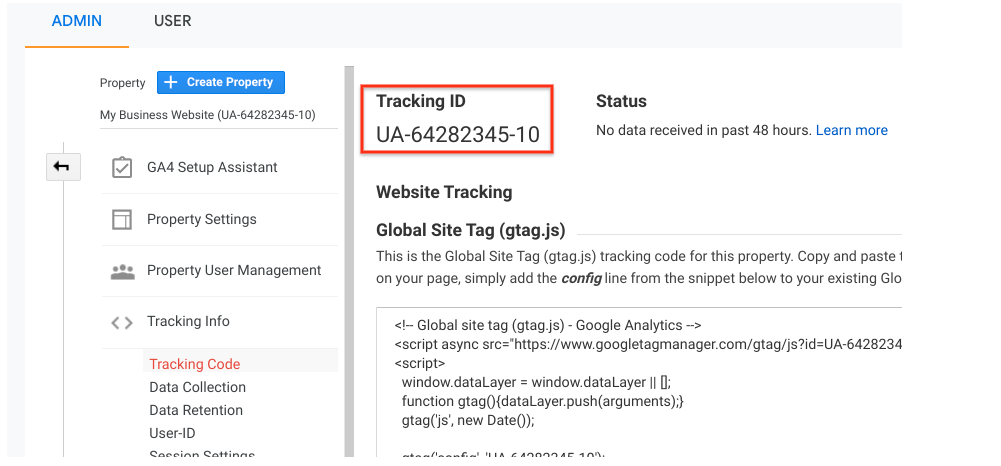Understanding the Art of Conquering Information Collection Limitations in Google Analytics for Better Decision-Making
In the realm of digital analytics, the capability to essence purposeful understandings from data is extremely important for notified decision-making. Google Analytics stands as an effective device for companies seeking to recognize user behavior, track conversions, and optimize their online existence. Nonetheless, data collection limitations within this platform can hinder the precision and deepness of the info gathered. To truly harness the capacity of Google Analytics for critical decision-making, grasping the art of conquering these constraints is important. By utilizing innovative techniques and critical methods, companies can boost their information top quality, unlock concealed insights, and lead the way for more enlightened and efficient choices.
Information Top Quality Evaluation
Evaluating the high quality of data within Google Analytics is a critical step in guaranteeing the integrity and accuracy of insights originated from the collected info. Information high quality analysis includes reviewing different facets such as precision, completeness, consistency, and timeliness of the information. One crucial facet to consider is information accuracy, which refers to just how well the information shows the real worths of the metrics being determined. Inaccurate information can bring about faulty conclusions and illinformed service decisions.
Completeness of information is one more important consider evaluating information high quality. It involves ensuring that all required data points are collected which there are no gaps in the details. Incomplete data can skew evaluation results and prevent the ability to obtain a thorough sight of individual habits or web site efficiency. Consistency checks are also vital in data high quality assessment to determine any kind of discrepancies or anomalies within the information set. Timeliness is equally important, as out-of-date data may no longer matter for decision-making procedures. By focusing on information top quality analysis in Google Analytics, businesses can enhance the integrity of their analytics reports and make even more informed choices based upon exact insights.
Advanced Tracking Techniques
Utilizing advanced tracking methods in Google Analytics can substantially enhance the deepness and granularity of information collected for even more extensive evaluation and understandings. One such technique is event monitoring, which permits for the surveillance of details communications on a site, like clicks on buttons, downloads of data, or video views. By implementing event monitoring, services can get a deeper understanding of customer habits and interaction with their online web content.
Furthermore, personalized measurements and metrics give a way to tailor Google Analytics to particular company requirements. Personalized measurements enable the production of new information points, such as customer roles or consumer segments, while custom metrics allow the monitoring of unique performance indicators, like earnings per customer or ordinary order worth.
Furthermore, the utilization of Google Tag Manager can streamline the execution of monitoring codes and tags across a website, making it simpler to take care of and release advanced tracking arrangements. By taking advantage of these sophisticated tracking methods, businesses can unlock valuable insights and maximize their online methods for far better decision-making.
Personalized Dimension Application
To improve the depth of information collected in Google YOURURL.com Analytics past sophisticated tracking methods like event tracking, companies can implement personalized measurements for even more tailored insights. Custom dimensions allow services to define and gather particular information factors that are appropriate to their distinct objectives and goals (What Data Does Google Analytics Prohibit Collecting?). By designating personalized measurements to various elements on a website, such as user communications, demographics, or session details, organizations can gain a more granular understanding of how users involve with their online buildings

Acknowledgment Modeling Approaches
By using the best acknowledgment version, businesses can accurately attribute conversions to the suitable touchpoints along the customer trip. One typical acknowledgment version is the Last Interaction version, which gives credit scores for a conversion to the last touchpoint an individual interacted with prior to converting.

Data Sampling Evasion
When handling huge quantities of data in Google Analytics, conquering information sampling is crucial to ensure accurate insights are acquired for informed decision-making. Information tasting occurs when Google Analytics estimates patterns in information as opposed to analyzing the complete dataset, potentially leading to manipulated outcomes. To prevent information sampling, one efficient technique is to lower the date array being examined. By concentrating on shorter period, the possibility of encountering tasted information decreases, giving a much more accurate representation of user actions. In addition, utilizing Google Analytics 360, the costs variation of the system, can help alleviate tasting as it enables greater data thresholds before tasting starts. Implementing filters to narrow down the data being analyzed can also help in staying clear of sampling problems. By taking these proactive actions to reduce data tasting, companies can extract much more accurate understandings from Google Analytics, bring about better decision-making and enhanced overall performance.
Final Thought
Finally, mastering the art of getting over data collection constraints in Google Analytics is vital for making notified choices. By performing an extensive information quality analysis, implementing sophisticated monitoring techniques, using custom measurements, using acknowledgment modeling strategies, and avoiding data sampling, services can guarantee that they have precise and trusted data to base their decisions on. This will eventually bring about a lot more efficient methods and far better outcomes for the organization.